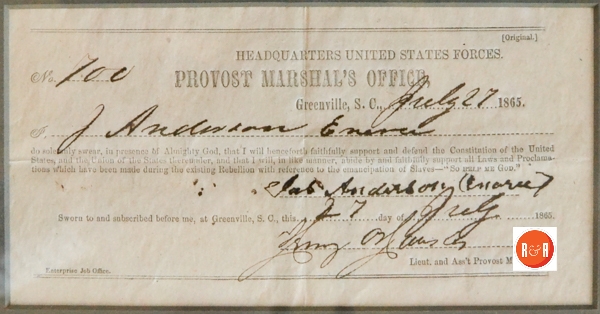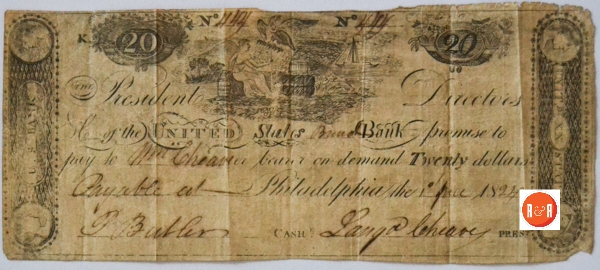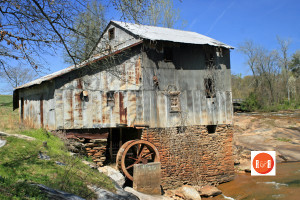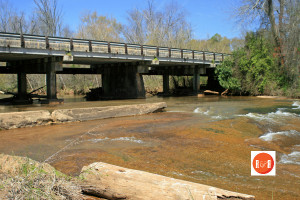The Rock Hill Herald reported on Jan. 20, 1887 – “An accident occurred on Wednesday at the Tanner Blind and Sash Factory in Spartanburg. A young man named Cannon about sixteen was caught in the belting of one of the machines and was thrown against the wall, causing his death. He was the grandson of the Hon. Gabriel Cannon.”
City Directories and History: Variously known as Nicholl’s Fort, Tanner’s Mill, and Anderson’s Mill, this structure sits on a foundation which dates from about 1780. The first court in the county met here in 1785. The water mill continued operation into the 1970s. It is located southeast of the city of Spartanburg where SC-64 crosses the North Tyger River. (Pictorial History of Spartanburg Co., S.C. – Racine)
Anderson’s Mill (originally Tanner’s Mill), is a good example of a water-powered gristmill, a once important element in the economy of eighteenth and nineteenth century piedmont South Carolina. Although the history of Anderson’s Mill may possibly begin in the late eighteenth century, the majority of the mill structure and its machinery are believed to date from the late nineteenth or early twentieth century.

Images courtesy of photographer Bill Segars – 2010


Located on the North Tyger River, Anderson’s Mill is a one-and-one-half story frame structure covered by corrugated tin siding. The structure features a low gable roof, with a projecting pent roof along the north façade. Fenestration is irregular. The eastern façade faces the river and features a metal water wheel that generates the power for the milling process. Water from the river is diverted through the wheel by a nearby lock and canal. The structure consists of a basement, main floor, and attic story. Milling machinery includes a feed mixer, self-rising mixer, scales, corn sheller, and a raised platform with a large millstone. The mill was operated commercially until 1975. Listed in the National Register November 14, 1978.

Shipping statement dated Sept. 19, 1853 for one pair of millstones and castings to James Anderson at Pliny, S.C. (Anderson’s Mill) from Dunham & Dimon of N.Y. These were delivered via their agent Caldwell Blakely in Charleston S.C., who shipped them to the mill. Courtesy of the Douglas Collection – 2015
“Nichol’s Mill, now known as Anderson’s Mill, on the North Tyger River, three miles west of Spartanburg is one of the most interesting and historic corn mills in the area. The first county court was held here in June, 1785, on the plantation of Capt. David Anderson and has been known as Anderson’s Mill for many years. Mills Atlas of the
County (1825) designates the site as Nichol’s Mill. History records that the first county court was held at “the narrow pass on Tyger River.” The original stones for this mill, hewn from the rocks of the nearby shoals, have been resharpened over the years and are sdll used to grind corn. A spring back of the mill was a favorite drinking spot for those who hauled their corn to the mill.” (According to other documents, the mill was acquired in 1831 by James “Enoree” Anderson.)
Information from: Names in South Carolina by C.H. Neuffer, Published by the S.C. Dept. of English, USC
The papers shared with R&R by the Douglas Family Collection clearly outline a routine business

Two of the numerous envelopes from George W. Williams to James “Enoree” Anderson over decades of doing business. Courtesy of the Douglas Collection – 2015
 relationship with Charleston’s largest grocers and factors, including George W. Williams establishment on Haynes Street. He lived on Meeting St., and also operated an important financial establishment at #1 Broad Street. See additional documentation of family history and genealogy found in the MORE INFORMATION link in the picture column.
relationship with Charleston’s largest grocers and factors, including George W. Williams establishment on Haynes Street. He lived on Meeting St., and also operated an important financial establishment at #1 Broad Street. See additional documentation of family history and genealogy found in the MORE INFORMATION link in the picture column.

Map section showing the location of Anderson’s Grist Mill on the Tiger River. Sloan – Epton Spartanburg Co Map ca. 1869. Courtesy of the Cobb Collection – Other Side of the River Museum, 2016

Primary location the the Anderon’s Mill. Sloan – Epton Spartanburg Co Map ca. 1869. Courtesy of the Cobb Collection – Other Side of the River Museum, 2016
Additional links: Anderson Mill
ALSO ON THIS PAGE: The PDF’s list was compiled as part of a study of grist mills in upcountry S.C. in 2005. The survey was conducted by Southeastern Archeological Services, Inc. Researchers should recall that in 1880, many of S.C.’s counties had not yet been formed. Therefore, some grist mills as per this survey of 1880 will be listed in their original county locations, perhaps not in the current S.C. county location.
R&R Note: This list is certainly considered a great research project but it does not include many “locally” documented gist mills that operated during the late 19th century.
Stay Connected
Explore history, houses, and stories across S.C. Your membership provides you with updates on regional topics, information on historic research, preservation, and monthly feature articles. But remember R&R wants to hear from you and assist in preserving your own family genealogy and memorabilia.
Visit the Southern Queries – Forum to receive assistance in answering questions, discuss genealogy, and enjoy exploring preservation topics with other members. Also listed are several history and genealogical researchers for hire.
User comments welcome — post at the bottom of this page.
Please enjoy this structure and all those listed in Roots and Recall. But remember each is private property. So view them from a distance or from a public area such as the sidewalk or public road.
Do you have information to share and preserve? Family, school, church, or other older photos and stories are welcome. Send them digitally through the “Share Your Story” link, so they too might be posted on Roots and Recall.
Thanks
IMAGE GALLERY courtesy of photographer Bill Segars – 2015
User comments always welcome - please post at the bottom of this page.

























[…] Just a few pages to explore: The Blaine Farm, Widows and Orphans, and Anderson’s Mill […]